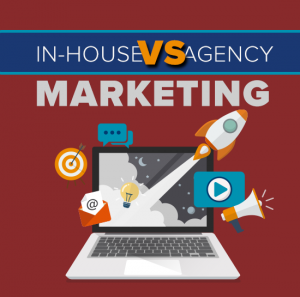— August 6, 2019

New employees don’t “hit the ground running”? Use a new-hire ramp-up plan to know sooner!
A digital agency CEO told me her sole salesperson wasn’t hitting his quota. She’d hired him 18 months earlier, to help her double her agency’s revenue.
I asked how long he’d been missing his quota. She sheepishly replied, “The whole time.”
The whole time!
Not only had she paid him ~$ 150K, she’d missed the extra $ 1.5MM+ he was supposed to add to her top-line.
Her actions and inaction—hiring and then not promptly firing him—had cost her $ 300K to $ 450K in missed profits. Ouch.
What if you could know sooner that you made a bad hire, for any role at your agency? Today I’ll discuss how to know sooner—including example plans and additional implementation tips.
Create and Use a New-Hire Performance Ramp-Up Plan
Want to ensure a new employee really “hits the ground running”? You need to create and use a new-hire performance ramp-up plan. The new-hire ramp-up plan details what you expect each month in a new employee’s first year, so you know sooner if they’re not on-track.
The ramp-up plans are unique to each role, and may vary somewhat for each hire based on their level of prior experience.
Why create a performance ramp-up plan?
Ramp-up plans are about creating an “early warning” system—so you know if someone is off track before it’s too late to fix it (or, if they’re not going to work out).
If someone’s on track, you can celebrate. And if they’re not on track, you can take action. You won’t immediately fire someone, but you’ll escalate—verbal warnings, then a formal performance improvement plan (PIP), and finally termination.
Where You Can Use Employee Ramp-Up Plans
Conveniently, creating a customized performance ramp-up plan works for any position at your agency, not just sales roles.
If you need team members who deliver results, you’ll need ramp-up plans for every new hire.
- Ramp-up plans work for highly-billable employees—like a strategist, designer, developer, copywriter, or other subject matter expert (SME).
- They’ll work for roles that involve managing others—like an account manager (AM), project manager (PM), or department director.
- Performance ramp-up plans work for non-billable roles, too—like an operations director or, yes, a salesperson.
Wondering how to get started? Read on!
5 Steps to Create a New-Hire Performance Ramp-Up Plan
What’s the key to a successful ramp-up plan? Consider these steps:
- Identify the role’s key performance indicators (KPIs).
- Choose an escalating set of monthly KPI targets you expect them to hit as they acclimate to the role.
- Get the new employee’s buy-in on the plan and the metrics.
- Review progress each month—and hold the employee responsible if they’re aren’t hitting their ramping-up KPIs (and/or revise the plan, if you realize your assumptions were off).
- Terminate the employee if they continue to fail to meet their KPIs.
Does this seem cruel and robotic? It’s not; consider the alternatives.
Ramp-Up Plans Reduce (or Eliminate) Angst
Using a ramp-up plan eliminates a lot of angst. Many agency leaders get trapped in a cycle of wondering why someone isn’t performing. It’s useful to understand why… but also ultimately irrelevant.
You’ve hired them to do a job. The ramp-up plan shows you—and the employee—if they’re doing the job you need them to do.
If they aren’t doing that job, you can choose whether to change their targets or to ask them to leave. But you won’t be surprised again… or realize after 18 months that they’ve never done their core job.
This helps you head-off “reluctant employees,” too—because you’ll see that they aren’t doing their job.,
Ramp-Up Plans Make You a More Humane Boss
I think it’s more unfair to fire someone for performance concerns if you never nailed down exactly what you expect from them.
Sure, there’s Wet Twine out there—but as I shared in Made to Lead (2016), your employees can’t read your mind. Even a New Rope employee will struggle when the targets are unclear.
If someone’s not going to make it, terminate them after a month or two—so they can get back to their job search—instead of realizing your mistake at six or eight months, where they now look like a job-hopper.
Examples of Employee Performance Ramp-Up Plans
Let’s look at role-specific examples, to help you create your first (or next) new-hire ramp-up plan!
Example #1: Subject Matter Expert (SME) Ramp-Up Plan
When you hire a highly-billable subject matter expert (SME), their primary job is to consistently bill clients for their expertise. SME roles include positions like: designer, developer, strategist, copywriter, or videographer.
If you were hiring a junior developer with a “bill 32 hours/week” target, for example, their ramp-up plan might look like this:
- Month 1: Bill 0 hours/week
- Month 2: Bill 5 hrs/wk
- Month 3: Bill 10 hrs/wk
- Month 4: Bill 20 hrs/wk
- Month 5: Bill 28 hrs/wk
- Month 6 (and beyond): Bill 32 hours/week
The idea is that—for instance—if someone isn’t up to 10 hours/week in Month 3, they’re unlikely to hit 32 hours/week by Month 6. (And you can consider firing them at the end of Month 3 instead of waiting 6-18 months.)
You’ll need to adjust the ramp-up metrics to your situation. For instance, strategists tend to be the least-billable SMEs (because they’re most likely to get interrupted by clients), and your “team lead” SMEs tend to be less-billable due to their internal coaching and mentorship work.
Example #2: Salesperson Ramp-Up Plan
When you hire a salesperson at your agency, you expect them to reach an annual sales quota.
The quota typically is divided into quarterly—and sometimes monthly—metrics, based on their annualized target. You might also set activity-based metrics—around things like exploratory calls, responses to inbound sales inquiries, and proposals sent.
A salesperson’s ramp-up plan might look like this (where the “% of quota” is an annualized percentage of what you’d expect in a month once they’re performing at 100%):
- Month 1: Hit 0% of monthly quota, but shadow owner on 3+ exploratory calls and creating 1 proposal
- Month 2: Hit 10% of monthly quota (based on handling inbound leads), leading 2+ exploratory calls with owner on the line
- Month 3: Hit 30% of monthly quota, while handling 100% of exploratory calls from inbound leads and starting their own prospecting efforts (including starting outreach to their current network)
- Month 4: Hit 40% of monthly quota, while taking the lead on creating all new proposals
- Month 5: Hit 50% of monthly quota, while learning to present agency’s primary bizdev talk
- Month 6: Hit 75% of monthly quota, while generating leads from giving the bizdev talk
- Month 7: Hit 90% of monthly quota
- Month 8 (and beyond): Hit 100%+ of monthly quota
Specific numbers depend on things like your sales cycle and conversion rates, the role’s level of experience, and whether you want them “working” inbound opportunities in addition to outbound opportunities.
The exact percentages will likely swing significantly—one deal could make the difference between their hitting 30% vs. 80% of their monthly quota. You’ll also need to decide how to handle if a retainer client cancels their retainer early.
The key is that salespeople don’t have direct control over hitting their quota—but they do have direct control over the activity-based metrics that contribute to reaching the quota.
If your agency focuses on enterprise sales, your new salesperson might not close their first deal for 6-12 months—but it’ll be huge. In that case, look at a mix of activities and quota progress. (Or if you hired someone based on their enterprise client network, you might reasonably expect results sooner.) Either way, just be sure you and the new hire are clear on your expectations before they start.
A quota-based plan works for an internal marketing person, too: set monthly ramp-up metrics around their lead-gen quota.
Example #3: Account Manager (AM) Ramp-Up Plan
When you hire an account manager (AM), you expect them to retain and upsell clients. (At smaller agencies—and PR agencies of most sizes—the AM is doing client strategy, too.)
If you’re retainer-based, you’re ideally renewing 80-90% of your current clients each year. Via upsells, you’re also ideally growing each account an average of at least 10-20% annually. (Some clients won’t want to grow… and then other clients will increase their retainer by 50%, 100%, or more.)
An AM’s ramp-up plan might look like this:
- Month 1: Schedule “get to know you” calls with 90% of their assigned clients.
- Month 2: Lead 100% of their ongoing client meetings.
- Month 3: Schedule in-person or video meetings with 90% of their assigned clients’ bosses, to better understand their business and personal goals.
- Month 4: Lead a majority of any client renewals, with their manager shadowing the conversation. Identify opportunities to grow all of their accounts by at least 20% in the coming year.
- Month 5: Handle 100% of client renewals, and pitch 100% of clients on the upsells identified last month.
- Month 6 (and beyond): Secure 90%+ client satisfaction rating on next round of client surveys.
- Month 12 (and beyond): Grow their account base (total accounts managed, in dollars) by 20% year-over-year.
If they’re more senior—an Account Director managing a team of AMs, for instance—you’ll likely expect higher sales goals, and you’d also set metrics around retention and upsells by their direct reports. If they’re more junior—an Account Coordinator, for instance—you’d evaluate them based on activities and client satisfaction rather than retention and upsells.
Example #4: Project Manager (PM) Ramp-Up Plan
When you hire a project manager (PM), you primarily expect them to deliver work smoothly and profitably.
With that in mind, a PM’s new-hire ramp-up plan might look like this:
- Month 1: Schedule “get to know you” calls with 100% of the internal team members they’ll manage.
- Month 2: Lead 100% of their internal team meetings, meet with their AM(s) at least once weekly, and conduct weekly budget checks.
- Month 3: Plan at least one client engagement from scratch, and join AM on at least one client-facing meeting with 80% of the PM’s clients.
- Month 4: Secure on-budget performance for 80% of their client engagements.
- Month 5: Be prepared to step in as AM’s backup when the AM is on vacation or otherwise out for more than a day, and support Director of Operations on interviewing freelance SME candidates.
- Month 6: Create list of strategic and tactical improvements we can make to our PM processes, to present as recommendations to Director of Operations before the end of the month.
- Month 12 (and beyond): Secure X% gross profit margins on projects (note: depends on agency’s targets) and 90% satisfaction ratings from internal 360 review feedback.
Exact metrics will depend on how long your client engagements last, along with the gap(s) you need them to close. The PM’s experience level matters, too—a project coordinator tends to be more billable than a project manager, and a PM tends to be less billable than a Director of PM.
Example #5: Operations Employee Ramp-Up Plan
What about operations hires, where it’s inherently a low- or non-billable role? Ramp-up plans work for them, too! This category covers roles like Executive Assistant (EA), Director of Operations, HR Manager, Office Manager, or Bookkeeper.
You primarily expect a new operations employee to focus on internal activities to build the business and make your life easier. This might include improving certain financial ratios and/or completing certain projects.
Say you’re hiring an Operations Manager, with an eye toward both special projects and day-to-day execution. Their performance ramp-up plan might look like this:
- Month 1: Meet one-on-one with 100% of their day-to-day internal contacts, review Chart of Accounts, and review all active projects in PM system.
- Month 2: Gather data to understand why projects are typically over budget by 20%+, run payroll themselves 100% of the time, and handle 50% of day-to-day issues without needing to escalate to the owner.
- Month 3: Work with owner to plan our “move to a new office” process for when our current lease ends next year, including defining specifications, creating a budget, and building a v1 workback plan to minimize downtime.
- Month 4: Lead the “finding and hiring freelancers” process for all open contractor positions, manage monthly cash projection process (with bookkeeper and owner), and work with PMs to implement solutions to client budget overruns.
- Month 5: Identify internal mini-project that will add six figures in value to the agency, manage the recruiting process for all open employee positions, and handle 90% of day-to-day issues without escalating to the owner.
- Month 6: Create plan to increase net profit margins from 16% to 20% within 6 months, and ensure we have new-hire ramp-up plans for 100% of employee roles.
- Month 12 (and beyond): Keep agency-wide net profit margins above 20%, and give owner advance warning if we’re not on track to hit the goal on a monthly basis.
Specifics will depend on their role, of course. You might expect a COO to measurably improve agency-wide profit margins. You might expect a bookkeeper to send 100% of invoices by the 5th business day of each month and to reconcile 100% of accounts by the 10th business day of each month. Your executive assistant’s KPIs might be about reducing your admin workload and day-to-day interruptions.
Don’t Forget Qualitative Factors, Too!
From my examples, you’ll see numbers are important—but it’s not just about the numbers. Don’t forget qualitative factors! For example:
- Are they following your agency’s company values?
- Are they escalating appropriately when they need help (not too often, not too infrequent)?
- Are they meeting your quality expectations (which are ideally quantitative)?
- If someone’s client-facing, what feedback are you getting from their clients?
- If someone’s a manager, what ratings are you getting from their direct reports?
Knowing your agency’s unique Values, Goals, and Resources (VGR), what other qualitative factors might you consider based on your employee roles?
More Tips on Using Employee Ramp-Up Plans at Your Agency
Focus on hiring New Rope in the first place. If you’re hiring Wet Twine—or people who are unlikely to work out in the first place—a performance ramp-up plan will only confirm the inevitable. The more you do to upgrade your hiring process, the sooner you’ll have a strong team.
Ramp-up plans are about creating an “early warning” system—so you know if someone is off track before it’s too late to fix it (or, if they’re not going to work out).
Align your ramp-up metrics to your company-level metrics. If you use an OKR framework, align the individual metrics to your overall OKRs. The same is true if you work on 30-, 60-, and 90-day goals.
Ramp-up plans don’t work if you don’t use them. You—or the new employee’s direct manager—need to hold people accountable. That’s where weekly one-on-one meetings help—since you’re regularly checking-in on each person’s progress, and can help them adjust.
Include the new employee in creating their ramp-up plan. You want the hire to be at least semi-involved in developing their plan, to get their buy-in… but remember that you ultimately choose the final targets.
Look for ways to make yourself “needed but not necessary.” You still need to create the ramp-up plan… but once you have it, you likely won’t need to re-create it each time you hire this role. If the new hire reports to one of your middle managers, coach the middle manager on creating and administering the ramp-up plan. And it applies to running the process, too—see my next point.
Assign the new employee to gather the data you need to review their progress. Other than your spot checks, you shouldn’t be the one pulling the data each month. The employee should have access to their numbers, and know how to gather a relevant summary. (But you’ll occasionally want to double-check their numbers, since unscrupulous people have an incentive to fudge the numbers.)
Ramp-up plans show you who’s high-potential too! It’s not always negative. For instance, a client noted his new salesperson had hit $ 1MM in sales by mid-year… significantly above his quota at that point in the year.
Worried an already-hired employee isn’t going to work out? If you don’t have a ramp-up plan already, create it now—better late than never. Outline the KPIs and get their buy-in on the plan going forward.
Accept that you might be wrong. If no one can hit the metrics, you may have set unreasonable goals, you might need to get better at hiring, or both. A smart manager knows when to adjust the metrics vs. escalate to verbal warnings and then a PIP.
Question: How will you use a performance ramp-up plan with your agency’s next new hire?
Business & Finance Articles on Business 2 Community
(497)
Report Post






